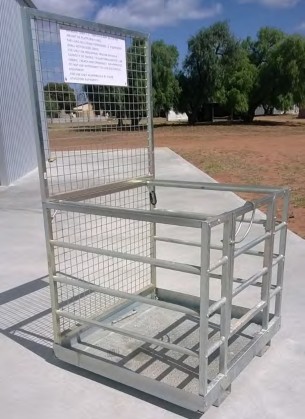Forklifts, or industrial lift trucks, are used to lift, stack and transfer loads in warehouses, factories, shipping yards, freight terminals and other workplaces. They offer a practical materials handling solution, however each year forklifts continue to be associated with workplace injuries and deaths.
Training and licensing
Forklift operators must be 18 years of age to hold a Licence to Perform High Risk Work which allows them to operate a forklift.
Before applying for this licence, they must undertake training and assessment with a Registered Training Organisation.
For all registration information relating to your forklift, visit Service SA.
Container forklifts, such as used in shipping yards and freight terminals, come with additional risks and therefore specific training for the environment should be considered.
Safe practices
When using a forklift follow safe work practices such as:
- observing speed limits and warning signs
- wearing correctly fitted seat belts
- slowing down
- sounding the horn at an intersection or when others are around.
The risk of forklift-related injuries can be reduced by having:
- a safe work environment
- safe systems of work
- effective worker induction and training
- safe and well-maintained machinery
- a pedestrian and traffic management plan
- policies and procedures, such as for pre- and post-operation checking of forklifts and the workplace, using attachments, carrying loads)
- adequate information and supervision
- good record keeping
- an incident reporting process, including for near misses.
Other issues you might consider include:
- managing fatigue
- manual handling
- refuelling
- battery charging
- fumes and gases
- noise.
Preventing injury
While forklifts are compact and manoeuvrable, they can become unstable when carrying loads. Fully laden, a standard 2-tonne forklift can weigh approximately 5 tonnes.
Even at low speeds, forklifts can cause serious injuries. The human and financial cost of forklift-related incidents for workers, industry and the community is substantial. It’s not just the operator who can be injured: pedestrians, especially other workers and visitors, can also be struck by a forklift or its load if traffic areas are uncontrolled.
Breaking the workplace injury chain at an early stage is achievable, through effective work health and safety management, strong leadership and a commitment from everyone to make work as safe as it can be. Finding safety solutions can be as simple as asking your workers for their ideas.
Effective and sustainable long-term solutions involve engineering, design and physical changes, such as an improved workplace layout and similar permanent control measures.
Forklift work platforms
Unsafe and/or inadequate systems of work – such as standing on forklift tynes or pallets, or in an unsuitable stillage – and the improper use of work platforms are common causes of serious incidents.
Forklift work platforms should be used to elevate workers to perform short duration tasks where it is not practical to use scaffolding, elevating work platforms or similar devices.


Source: Australian Standard AS 2359.1 - Reproduced with permission from Standards Australia
Safe work practices
Safe work procedures should be developed for tasks involving the use of forklift work platforms. Forklift operators must:
- be properly trained and hold a high risk work licence
- conduct pre-operational checks before lifting any person in a work platform, including ensuring the work platform is securely attached to the forklift
- ensure the vehicle is parked while workers are on the platform
- remain at the forklift controls at all times, keeping hands and feet clear of controls other than to lift or lower when required
- ensure all parts of the forklift are clear of overhead obstructions, especially powerlines and overhead electrical cables
- limit the number of workers on the platform to the manufacturer’s or competent person’s instruction
- erect barriers and signs in areas subject to passing traffic and ensure nobody stands or passes under the forklift tynes or platform (whether loaded or empty), unless they are a competent person conducting maintenance.
The forklift must:
- be parked on a hard level surface, with the handbrake on
- have all controls, other than lift and lower, immobilised
- have the mast vertical and tynes horizontal
- (if hydraulic) be fitted with a flow restrictor to limit the lowering speed in the event of hydraulic failure.
Safety alerts
Asbestos identified in Shantui Forklifts - Asbestos Safety and Eradication Agency
Asbestos in the brakes of manual hand pallet trucks - Asbestos Safety and Eradication Agency
Further information
Manufacturer’s operations manual
Managing the risk of falls in the workplace - Code of Practice
Managing the risks of plant in the workplace - Code of Practice
AS 2359.6: Powered industrial trucks
AS/NZS 1891: Industrial fall-arrest systems and devices
AS 2359.1: Powered industrial trucks – General requirements
AS 2359.2: Powered industrial trucks – Operations
General Guide for Industrial Lift Trucks – Safe Work Australia
General Guide for Workplace Traffic Management – Safe Work Australia
Forklifts information sheet for owners and operators – Safe Work Australia


